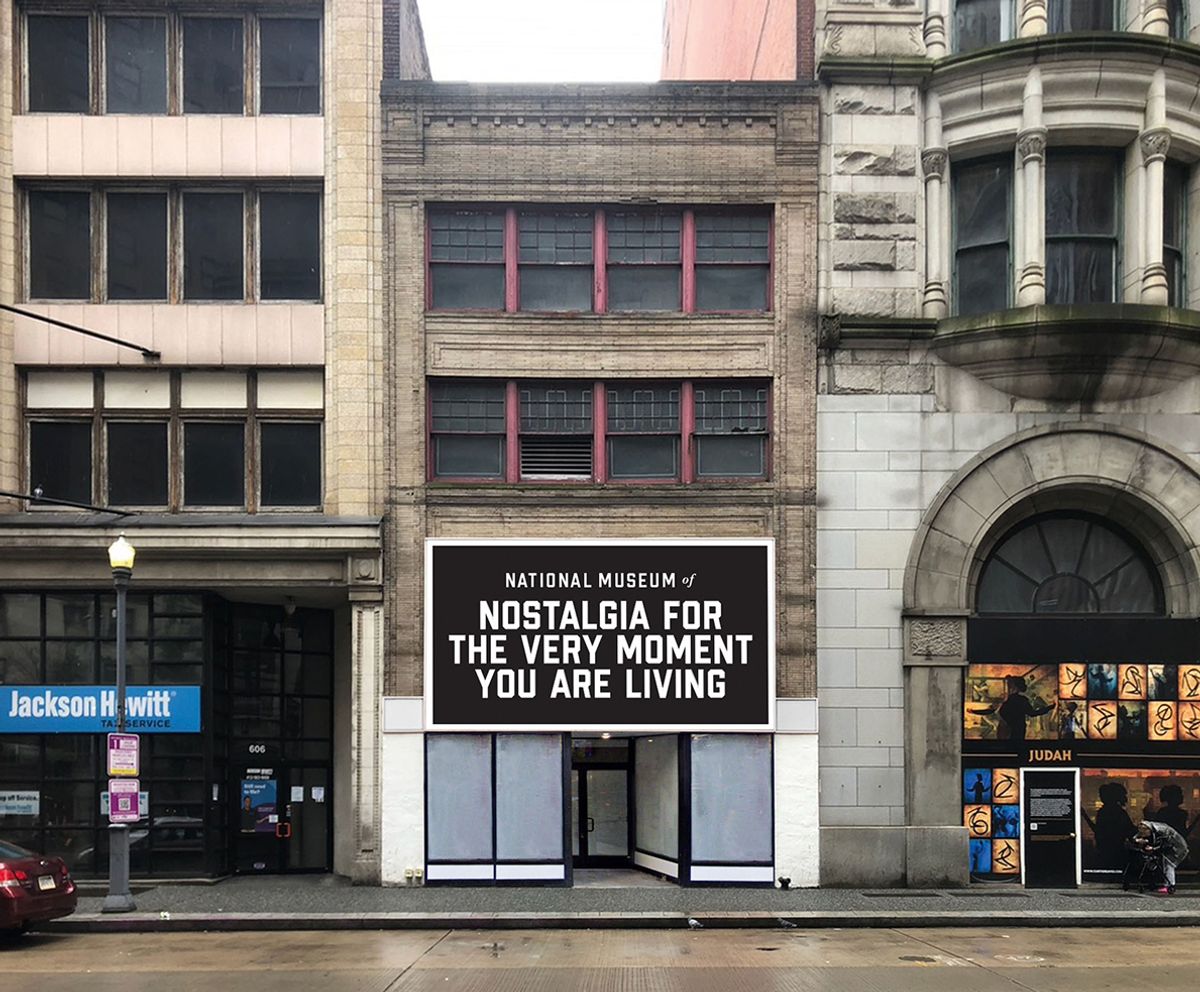In November 2018, the Institute of Museum and Library Services, a US federal agency dedicated to improving the nation’s museum, library and information services, published a comprehensive data report cataloguing around 30,000 museums and related organisations across the country. To put this staggering data into perspective, the count exceeds the combined total outlets of fast-food giants Starbucks and McDonald’s across the US.
The Pittsburgh-based artist Jon Rubin’s latest public project, The National Museum, considers the pervasiveness of museums across the country, the narratives they present and those they exclude. The project occupies an abandoned storefront at 604 Wood Street in downtown Pittsburgh, which has sat vacant for eight years, its windows papered over. This obscurity invites passersby to engage in speculative contemplation. Each month, a participating artist is invited to rename the space using the prompt “National Museum of (fill in the blank)”.
“The project functions as a kind of loophole or workaround, a participatory fiction that allows a variety of artists to put forth an ongoing series of grand propositions, a theoretical institution that repeatedly brings into question the certainty and reality of our pre-existing institutions,” Rubin says. “There is a fundamental hubris and absurdity in calling something—anything—a museum, let alone ‘The National Museum’. But, in many ways, it’s really no different than any other museum that someone, usually with far more money, privilege and power than any of my artist peers or myself, has simply made up.”
The tension of the phrasing and the social, political and economic associations it provokes are deliberate and fundamental to the project, Rubin says. “When a name starts with ‘The National Museum’, it triggers contentious and political associations with borders, nationhood, even citizenship and belonging. Who gets to determine the belonging of an entire group of people bound only by the fact of their geographical location.”
The façade as metaphor
In September, The National Museum’s first iteration launched with a contribution by the New York-based artist Pablo Helguera (a contributor to The Art Newspaper). Considering the notion of a façade as a political and social metaphor, Helguera branded the space the “National Museum of Nostalgia for the Very Moment You Are Living”.
The next phase of the project will be helmed by Hock E Aye Vi Edgar Heap of Birds and titled the “National Museum of Broken Treaties”. The project will run for two years, with coming iterations featuring the artists Sky Hopinka, Tania Bruguera, Walid Raad, Alisha Wormsley, Karyn Olivier and others.
The project, commissioned by the Pittsburgh Cultural Trust, builds on a 2019 collaboration between Rubin and the curator Joseph del Pesco for the inaugural Counterpublic triennial in St Louis, Missouri. Titled Monuments, Ruins, and Forgetting, the three-month installation turned an abandoned storefront into a conceptual museum space, commenting on the life cycle of historical narratives and calling into question which national stories and histories are deemed worth preserving, and which are omitted and forgotten.
“The more institutions I work with, the more I recognise how they are made up of a conglomeration of people performing around a premise or script,” Rubin says. “I’m interested in how groups of people come together around these shared notions of fantasy and play. The National Museum is an experiment in making that fantasy explicit and carrying the ruse forward.”


